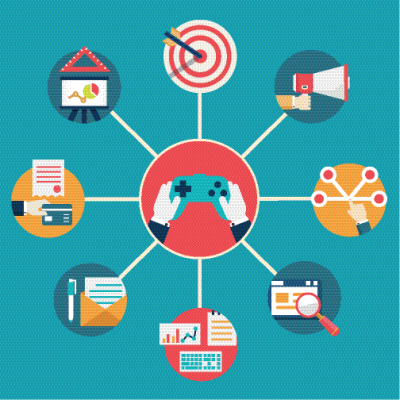
In recent years, corporate training methods have undergone a significant transformation. Traditional training programs, which often relied on lengthy PowerPoint presentations and monotonous lectures, are now being replaced by innovative approaches that engage employees and promote active learning. One such method gaining popularity is gamification. By incorporating game elements into employee training programs, organizations are witnessing increased employee participation, improved knowledge retention, and enhanced overall performance. This article delves into the world of gamification and explores its essential role in modern employee training.
Understanding Gamification
Gamification refers to the integration of game mechanics and design principles into non-gaming environments such as employee training programs. It harnesses the inherent human desire for competition, achievement, and rewards. By transforming training activities into interactive game-like experiences, gamification motivates employees to actively participate and learn in an enjoyable manner.
The Benefits of Gamification in Employee Training Programs
1. Increased Engagement and Motivation
Employee engagement and motivation are crucial for effective learning and development. Gamification taps into employees’ natural inclination towards challenges, achievements, and rewards, resulting in greater engagement levels. By introducing leaderboards, badges, and points systems, employees are driven to compete with their peers, pushing them to perform better and maintain high motivational levels throughout the training program.
2. Enhanced Knowledge Retention
Traditional training methods often struggle to ensure long-term knowledge retention. Gamification addresses this issue by creating interactive scenarios that encourage employees to apply their knowledge in realistic situations. By stimulating active problem-solving, critical thinking, and decision-making, gamified training programs enable better knowledge retention and transfer. Employees are more likely to remember and apply newly acquired skills when they have an opportunity to practice them in a gamified environment.
3. Personalized Learning Experience
One size does not fit all. Every employee has unique learning preferences, strengths, and areas of improvement. Gamification allows for personalized learning experiences by adapting to individual needs. By incorporating adaptive algorithms, gamified training programs can tailor content, difficulty levels, and challenges based on each employee’s performance. This personalized approach keeps employees engaged and ensures a more efficient learning process.
4. Real-time Feedback and Performance Tracking
Traditional training methods often lack real-time feedback, making it challenging for employees to assess their progress. Gamification provides immediate feedback on performance, allowing employees to identify areas for improvement and make necessary adjustments. Interactive leaderboards, progress bars, and achievement notifications provide employees with a clear visualization of their progress, motivating them to strive for continual improvement.
5. Team Building and Collaboration
Gamification promotes healthy competition among employees, fostering team building and collaboration. By dividing employees into teams or creating multiplayer scenarios, gamified training programs simulate real-world collaboration. Employees learn to work together, share knowledge, and solve problems collectively, resulting in improved communication and team dynamics within the organization.
Implementing Gamification in Employee Training Programs
To successfully implement gamification in employee training programs, organizations must consider several factors:
1. Clear Objectives: Clearly define your training goals and align them with game elements. Identify essential skills to be developed and determine how gamification can help achieve these objectives.
2. Relevant Game Mechanics: Choose game mechanics that align with your training goals. Leaderboards, badges, quests, and levels can be effective in motivating employees to actively participate and excel.
3. Rewards and Incentives: Introduce meaningful rewards and incentives to further encourage employee engagement. Whether it’s tangible rewards, recognition, or career advancement opportunities, make sure the incentives are enticing and resonate with employees.
4. User-Friendly Design: Create a user-friendly interface that is intuitive and easy to navigate. Seamlessly integrate game elements with the training content and ensure that employees can access the program from multiple devices.
Conclusion
Gamification has revolutionized employee training programs by turning mundane tasks into interactive and engaging experiences. By harnessing the power of gamification, organizations can enhance employee engagement, motivation, and knowledge retention. Employing personalized learning experiences, real-time feedback, and team-building elements, gamified training programs pave the way for more effective learning outcomes. As technology continues to advance, organizations embracing gamification are seizing the opportunity to transform their training programs and unlock the full potential of their workforce.


